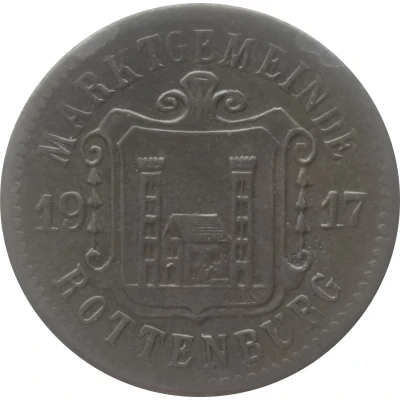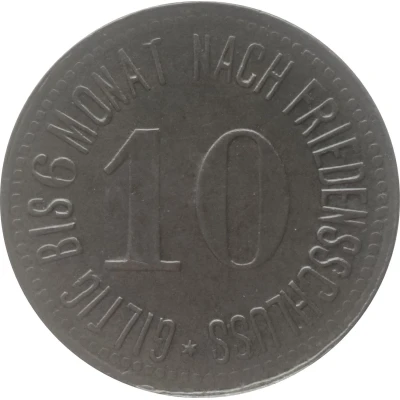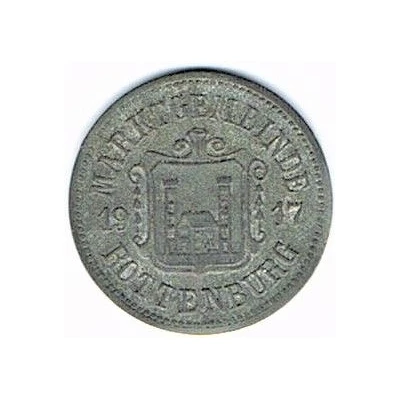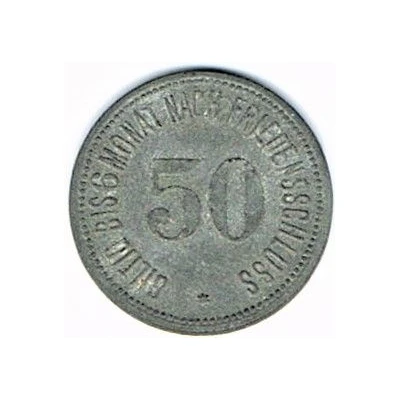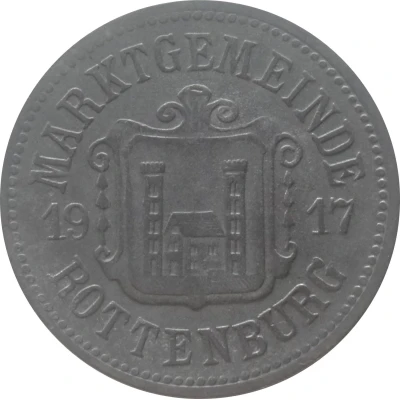
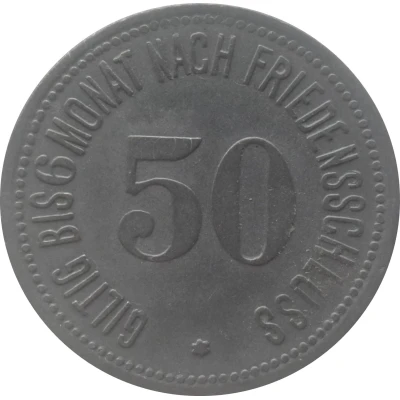

© Willem63 (CC BY-NC-SA)
50 Pfennigs - Rottenburg o. d. Laaber
1917 year| Zinc | 2.5 g | 22.4 mm |
| Issuer | Market Town of Rottenburg an der Laaber (Federal state of Bavaria) |
|---|---|
| Emperor | William II (Wilhelm II) (1888-1918) |
| Type | Standard circulation coin |
| Year | 1917 |
| Value | 50 Pfennigs (50 Pfennige) (0.50) |
| Currency | Mark (1914-1924) |
| Composition | Zinc |
| Weight | 2.5 g |
| Diameter | 22.4 mm |
| Thickness | 1.0 mm |
| Shape | Round |
| Technique | Milled |
| Orientation | Medal alignment ↑↑ |
| Demonetized | Yes |
| Updated | 2024-10-04 |
| Numista | N#351422 |
|---|---|
| Rarity index | 94% |
Reverse
Pearl rim, legend surrounding denomination.
Script: Latin
Lettering:
GILTIG BIS 6 MONAT NACH FRIEDENSSCHLUSS
50
✶
Edge
Plain
Interesting fact
One interesting fact about the 50 Pfennigs - Rottenburg o. d. Laaber 1917 coin is that it was issued during a time of economic turmoil in Germany. The country was experiencing hyperinflation, and the value of the German mark was plummeting. In response, the government introduced a new currency, the "Notgeld," which included coins like the 50 Pfennigs - Rottenburg o. d. Laaber 1917. These coins were made of zinc, a cheaper metal than the traditional copper or silver, and were designed to be used as small change. Despite their low value, these coins are now highly sought after by collectors due to their historical significance and rarity.
